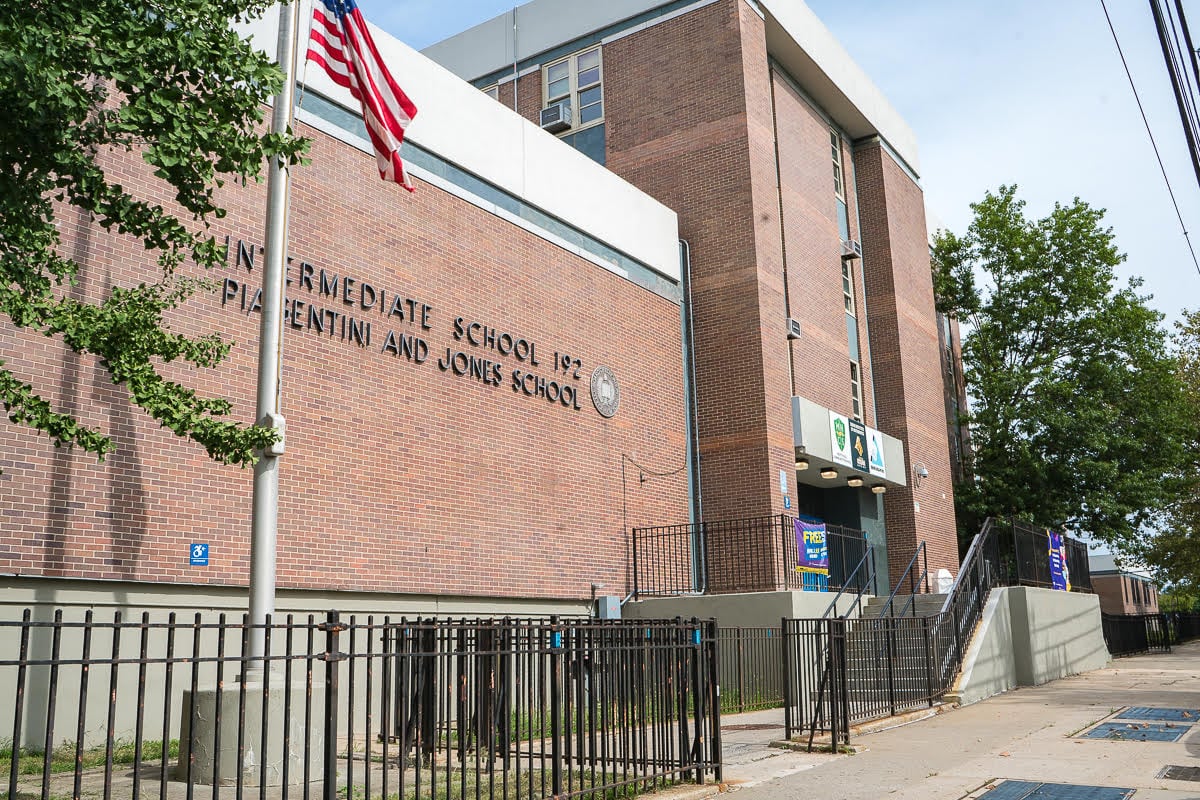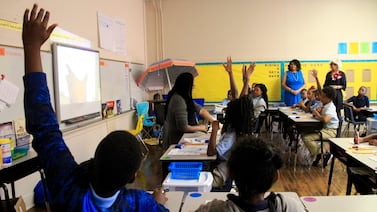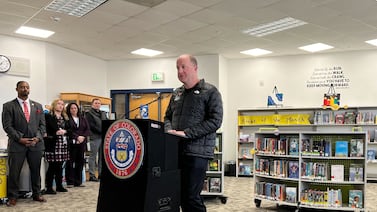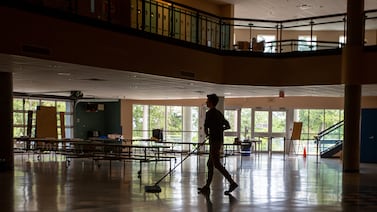This is part of an ongoing collaborative series between Chalkbeat and THE CITY investigating learning differences, special education and other education challenges in city schools.
In a massive bid to gauge reading skills following COVID-related learning disruptions, New York City’s education department is introducing literacy screening for its nearly 200,000 children in kindergarten through second grade.
This fall’s early literacy effort is part of a wider $635 million infusion, almost entirely federally funded, aimed at getting thousands of students back on track under what Mayor Bill de Blasio and schools Chancellor Meisha Porter have dubbed the “NYC Universal Academic Recovery Plan.”
Experts and advocates generally support the new plans to conduct additional screening, hoping it will help keep students from slipping through the cracks in the crucial early years of their schooling.
While the education department’s screeners aren’t designed to identify students at risk of having dyslexia, which is the most common learning disability, they are able to identify learning gaps in skills that are often associated with dyslexia, literacy experts say.
But many also note that screening alone will not address systemic issues that contribute to widespread literacy deficits across the city, such as uneven curriculum and inadequate teacher training.
The success of the screening will hinge on how well schools use the information and the quality of the interventions they’re able to offer. That remains a big question mark, as officials have long struggled to provide rigorous literacy instruction. By third grade, close to half of students have already fallen behind grade level in reading, according to state tests.
Regular screening “is one component of a good system,” said Sarah Part, a policy analyst at the nonprofit Advocates for Children. Still, she and others said implementation will be key, including what specific training will be provided and how educators will be expected to tweak their teaching in response.
“We don’t want to see this just left up to individual schools for everyone to do their own thing,” Part said.
Top education officials have been pushing in recent years for more assessments, a move that is gaining more traction after the coronavirus pandemic hampered more than a year of learning and now brings an injection of federal relief dollars.
Education department officials said the city is devoting $36 million for additional screening this year, including the cost of training teachers to use it. Roughly $3 million of that is earmarked for K-2 literacy assessments.
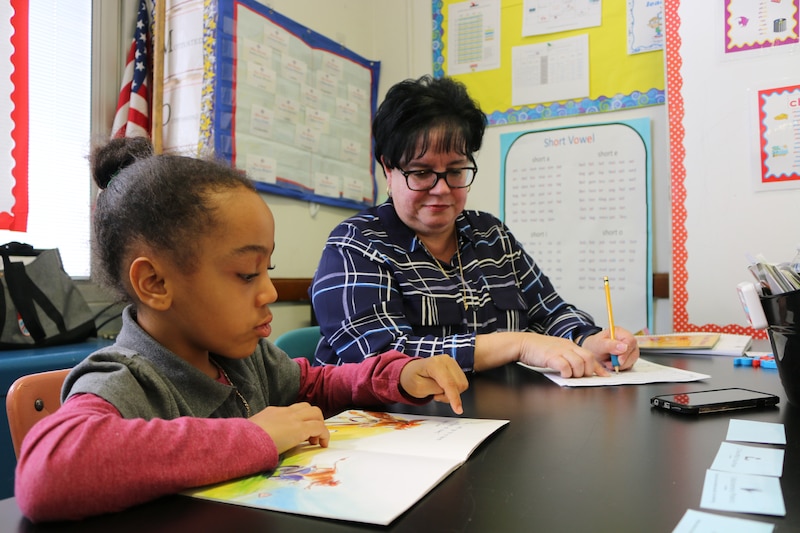
The screeners are expected to be conducted at least three times per academic year, education officials said.
Older students in grades three to 12 are also set to be screened throughout the year using different assessments in English as well as math to help give educators a baseline understanding of where students are and track their progress throughout the year.
‘Helps Us Plan’
The main early literacy screener that the education department has endorsed and is providing at no cost to schools is called Acadience Reading, the latest iteration of a screening tool known as Dibels (Dynamic Indicators of Basic Early Literacy Skills). That tool has been around for years, and some schools have long been using such tools to identify struggling readers.
For the younger students, the screener often tests them on their letter-naming fluency, and their ability to sound out letters, such as in the word “c-a-t,” according to literacy experts familiar with the tools. Another common assessment offered through Acadience has students read aloud nonsense words, such as “vip,” to get a sense for how developed their decoding skills are.
In aggregate, the screeners can help a school pinpoint any larger patterns pointing to weaknesses in curriculum and instruction, educators said.
At the Bronx Delta School in Throggs Neck, school officials have been using the Acadience screener since 2019, along with every elementary school in District 8. The tool helped them zero in on problems students were having trouble understanding and identifying the individual sounds that make up words, known as phonemic awareness, said Damaris Ramirez-Bello, an assistant principal.
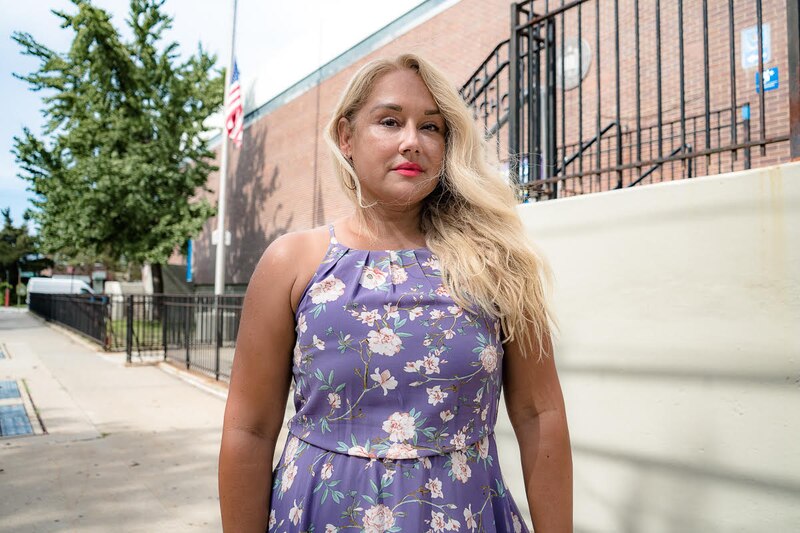
The school used data from the screeners to identify students who need extra help either individually or in groups, and deployed a new curriculum that includes 10-15 minute phonemic awareness drills.
“We did a lot of reading strategies and sight word activities, but we weren’t addressing this,” said Ramirez-Bello. The screening “helps us just identify who is struggling and helps us plan.”
Devin Kearns, a reading disability researcher who’s been working with the education department on the new universal screening program, said the assessments can take as little as one minute to conduct to identify which skills young readers need extra support with.
“It’s a really short assessment designed to be very time-efficient for the teachers, and then that really short assessment gives you enough information to identify whether a kid is likely going to have academic difficulty,” said Kearns, an associate professor at the University of Connecticut. “The kids who perform below a certain cutoff point or benchmark, those kids are provided supplemental instruction.”
A crucial question is how well schools will use the data and whether they will be able to consistently provide additional help for students who need it. Experts pointed to a range of best practices: Younger students who are identified as being behind grade level in reading might benefit from small-group instruction on specific skill sets — such as identifying and verbalizing the sounds that letters make.
Those who are deemed even further behind should get more intensive help, including smaller group instruction of one to three kids, until the students demonstrate through follow-up screenings that they’ve made up the lost ground.
Education department officials said students who are identified as needing extra help will receive a phonics-based, multi-sensory approach to reading instruction known as Orton-Gillingham “multiple times a week.”
The city is also planning to increase the number of literacy coaches to 500, which will include one in every K-2 classroom. They also have pointed to plans to reduce class sizes in 72 schools and provide additional training for educators to boost reading instruction.
“This is going to be the year of the literacy blitz,” said Porter, the schools chancellor.
Still, it remains to be seen whether schools across the city will, in practice, be able to uniformly provide extra support to struggling readers and whether the education department will communicate clear expectations.
Universal Screening
For nearly a decade, the state has mandated schools conduct annual universal screenings to identify students who are struggling so those children could be flagged for extra help through a process known as Response to Intervention, according to Dr. Theresa Janczak, an associate professor at Buffalo State College.
Schools should have already been screening children at least three times a year, she said.
But the city’s education department found “wiggle room” that allowed schools to use other ways to satisfy the screening requirements, said teachers union president Michael Mulgrew.
He said the union has been pushing for schoolwide screenings for years, but that it was the concerns prompted by the COVID disruptions that finally convinced the education department to do it.
“It’s really what you should be doing,” he said. “It’s the responsible thing to do.”
New York City’s education department couldn’t say how many schools have been screening their young students in literacy over the years, though they recently piloted a different screening tool meant to identify students at risk of dyslexia at two schools in Brooklyn.
“We’re making unprecedented investments in literacy to help schools measure student progress in reading and writing and address the pandemic’s impact on learning,” said education department spokesperson Sarah Casasnovas. “Through the Academic Recovery Plan, teachers will have the resources they need to monitor student growth in areas like word identification and reading comprehension, and identify students at risk for dyslexia or other print-based disabilities.”
Across the country, dozens of states require schools to screen students for learning disabilities, such as dyslexia, while some require screenings to measure more general academic readiness.
Rhode Island requires universal screening of all newly incoming students in reading and math, according to the National Center on Improving Literacy. Michigan and Nebraska require multiple annual screenings of students’ reading skills in grades K to 3.
‘Some Level of Standardization’
Some principals are optimistic that the new screening tools could prove beneficial, but they still have questions about what resources will be available to make sense of the data and then take the next steps of providing support, as dictated by the results.
Nancy Harris, principal of Manhattan’s Spruce Street School, said she has used assessments in the past to determine if younger students are picking up key reading skills, but has typically used them in smaller groups of students rather than across entire grades.
“You don’t want teachers to use their best guesstimate,” she said. “Some level of standardization is helpful.”
If students are flagged as needing help, she plans to deploy two “intervention” teachers who could work on reading skills in smaller groups, or even one-on-one.
Given the mound of other work on principals’ plates, including managing health and safety protocols, adding these assessments — along with the training and implementation — makes it “logistically difficult,” but not impossible, said principals union president Mark Cannizzaro. He credited the education department with providing the financial resources for schools to pay additional educators to conduct the screenings or to fill in while teachers are conducting them.
Education department officials said the training of teachers has begun in some cases, but that most teachers will begin training once the school year starts.
Some parent leaders are raising concerns about the new assessments, including whether they would be culturally sensitive for students who may pronounce words in different ways that could be misinterpreted as reading deficits, and that schools might use the data to track students into classrooms filled with struggling readers, said Tom Sheppard, the parent representative on the city’s Panel for Educational Policy, which helps oversee contracts and other education policy decisions.
Sheppard also wondered whether it makes sense to implement a new battery of assessments just as schools are trying to figure out the logistics of how to welcome students who might be getting used to being in school — some for the very first time.
“How do you give them an assessment and they’ve never been in a school building but you have a first or second grade expectation?” he said. “We have to get them re-acclimated to the school environment before we even get there.”

